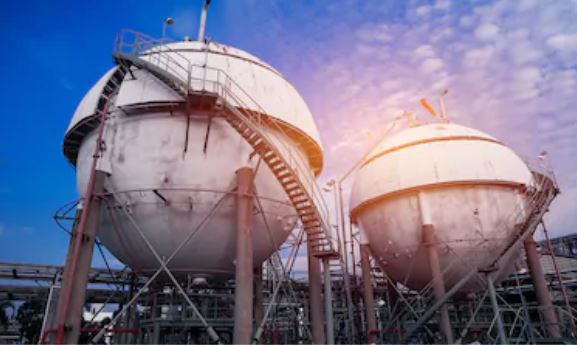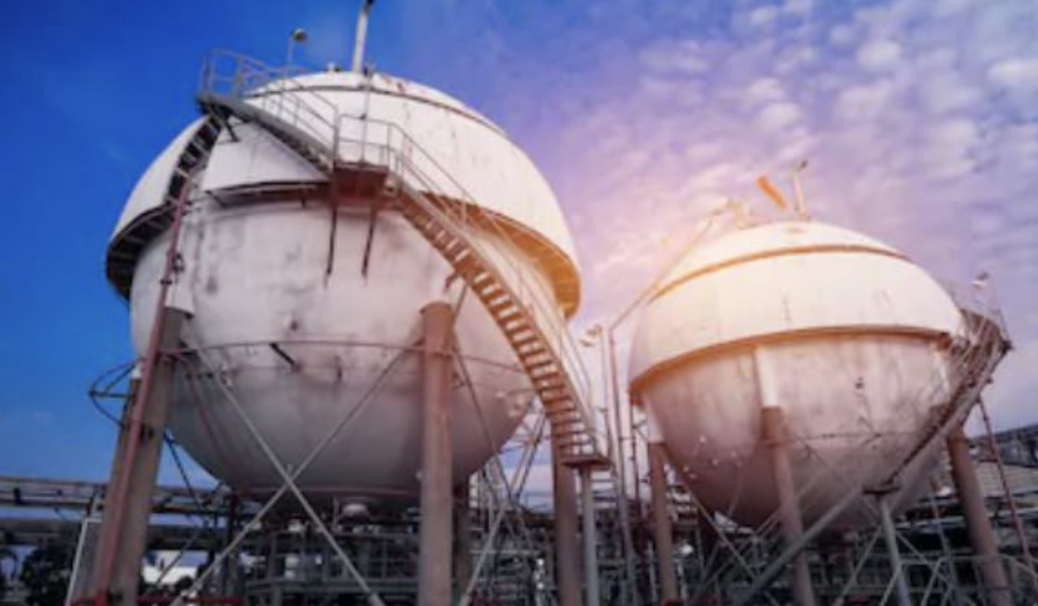Forms of Tanks
The usage and content of the storage tanks determine the form of tank necessary.
Spherical Reservoir Tanks – Such storage tanks are used primarily to hold strong-pressure liquids. The curved form is quite strong for the spherical tanks. The even application of pressures both externally and internally on the surfaces of the globe means there’re no vulnerabilities. However, spheres are more expensive to produce than cylindrical containers. The drawback of the triangular holding reservoirs is that the space per cubic meter is less than any type.
That means the amount of heat converted to the fluid in the sphere from either the warmer environments.

Cylindrical Reservoir Tanks – This Cylinder is commonly used in the processing because it’s less expensive than spheres to make. Nevertheless, because of the distortion on each point, cylinders are not as robust as spheres. The vulnerability is minimized by hemispheric or rounded finishes. The space stress may be close to that of a globe when the whole storage tanks are made of thicker metal fabricator, content than a typical spherical fabricated vessel with equivalent capacities.
Fixed Roof Reservoir Tanks – The lowest cost to build fixed roof storage tanks are generally They are usually considered to be the least acceptable fluid storage machinery. A traditional stationary tower tank is a cylindrical austenitic stainless steel shell with a tent-shaped or cornered roof which is attached to a tank shell permanently. Tanks for storage are usually completely welded for fluid and water vapor applications. Onset roof reservoirs, a breather mechanism is also often mounted It helps the tank to work under a gentle vacuum or pressure. In case of very low barometric pressure, temperature, or water stage, the valve avoids vapor release.
Floating Roof Tanks – Floating roof reservoirs are primarily used in indoor pressurizing markets. Floating roof storage tanks are made to transport vertically within the tank frame, creating a low constant gap between the ceiling and the item surface and ensuring a periodic sealing between the tank periphery and floating ceiling. We may be created from an organic form or a sort of that.
To order to avoid leakage of steam to retain liquid water, containers, a static roof, or an inner float are also used. A classic external floating roof tank comprises a cylindrical shell with a roof that swims onto the surface of fluid stored up and down to the fluid rate. Floating exterior roof tanks have a rim seal that is fixed to the edge of the roof and attaches to the tank base. When the roof is lifted and reduced, the rim seal device falls against its tank base.
Materials of Construction
Steel storage tanks with many various products may be made. You form your tank to choose depends on how you use the tank, what content you expect to store, and the situations under which you place it.
Stainless Steel – This is a growing and fair choice for reservoirs. Softened storage tanks of duplex stainless mild steel are also highly durable. The immunity to oxidation, rot, UV light, and flames given by inox metal, which ensures the tanks will last much more than the selling alloys steel or cement. To sum up, it increases corrosion resistance. Another leak-free storage solution is machined stainless steel storage tanks, which means you may trust that what you garner in it is inside. In a stainless steel tank, a specific lining can be inserted to enable a range of applications ranging from food and water resources processing to chemicals and crude oil products.
The lifespan of indoor steel is also high, rendering it very cheap. Ownership costs are lower than storage tanks of cement or bolted metal. The repair of Stainless Steel tanks would take a lot longer to finish. However, the eco-friendly processing of Stainless steel tanks is available. Inoxic steel is fully recycled once the tank is removed and over half of today’s new stainless steel is made of precious materials.
Another term about stainless steel is about precipitation hardening stainless steel alloys. Precipitation hardening stainless steels are chromium and nickel-containing steels that provide an optimum combination of the properties of martensitic and austenitic grades. Like martensitic grades, they are known for their ability to gain high strength through heat treatment and they also have the corrosion resistance of austenitic stainless steels.
Carbon Steel – The carbon steel content is greater than that of stainless steel. Storage tanks produced with this content have better heat transfer because of the higher carbon volumes. This is helpful to customers who are trying to steam their tank materials. High carbon steel grades are resistant to wear, which is both important for the industrial tank and mixable. The higher amount of coal makes it more difficult and heavier than other steels. Carbon steel tanks tend to become more cost-efficient. A tank made with carbon steel will require fewer materials than stainless steel tank, while the materials are less expensive than those used for exotic metal tanks. Carbon steel is usually preferred in situations where the tank will be stored indoors or undercover. Since carbon steel is more prone to rusting, it is best to place these tanks indoors. The components used for the carbohydrates tank are less costly than for the exotic steel tanks when made from medium carbon steel than steel tanks. In cases where the tank is stored indoors or undercover, carbon steel is generally preferred because low carbon steels can not be used in the areas because of these features: carbon steel is more likely to rust, such tanks should be put indoors.


